Rob Bignell's Blog, page 338
April 11, 2014
Offer valuable content to increase sales
When promoting  your self-published book, consider offering additional valuable content. This tried-and-true technique can drive readers to a service you provide or to other books you are selling.
your self-published book, consider offering additional valuable content. This tried-and-true technique can drive readers to a service you provide or to other books you are selling.
Your book already is valuable content. But after the reader finishes it, you only can hope that the reader takes the next step of hiring you for the service you provide or for buying additional books. Instead, now that you have their interest, offer them something beyond your book, something that sends them to a place where they can learn about your services or where they can see your other titles.
This valuable content might be a free sample chapter, a video, a blog or a podcast. It is provided to readers as a “bonus” for having purchased your book. It gives additional information beyond what is in your book.
For example, suppose that you are a website designer and penned a nonfiction book about what businesses should include on their Internet pages. You might include a link to a video or a podcast that discusses writing such content; this video or podcast would subtly mention that you offer web design services and provide contact information for you. Or you might provide an additional free chapter from a book about how to write content for a website, which you also authored.
A spin on this is to enlist readers in improving your services or products (read “books” here). Rather than have a reader stew about a spelling error that you missed when editing your book, instead reward them for “finding” it. To that end, you might include in the book a page that says, “If you spot a typo, let us know for a free gift.” The gift might be a set of bookmarks promoting your titles or could be a discount on the purchase of your next book.
Need an editor? Having your book, business document or academic paper proofread or edited before submitting it can prove invaluable. In an economic climate where you face heavy competition, your writing needs a second eye to give you the edge. I can provide that second eye.
<A HREF="http://ws-na.amazon-adsystem.com/widg... Widgets</A>Related articles
 How to create your book's table of contents
How to create your book's table of contents Draft rarely perfect after first go-round
Draft rarely perfect after first go-round Offer readers a sample chapter page on website
Offer readers a sample chapter page on website
April 10, 2014
What is an ‘imprint’ in self-publishing?
For those 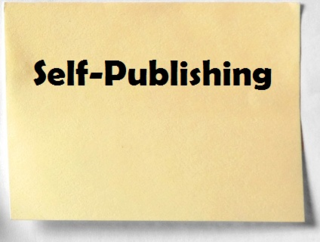 authors self-publishing a book for the first time, there’s a lot to learn – new terminology, new skills, new business models. One of the terms a new author likely is to run into, especially when uploading their book to CreateSpace or another print on demand company is imprint.
authors self-publishing a book for the first time, there’s a lot to learn – new terminology, new skills, new business models. One of the terms a new author likely is to run into, especially when uploading their book to CreateSpace or another print on demand company is imprint.
Imprint is another word for “publisher.” Every book has a publisher, which is someone (or a company) who prepares the text for sale. Typically, the imprint or publisher own the book’s ISBN.
So who is the imprint – or publisher – of your book?
To answer that question, first ask who owns the ISBN that is going on the book’s title page. If you (or your company) personally purchased the ISBN, you are the publisher. Individuals as well as companies can purchase and own ISBNs, so you don’t have to create a business simply because you’re self-publishing, though there are some advantages to it.
Secondly, if you don’t have an ISBN, ask yourself who then will assign one to your book. Either you must go buy one or you can have the print on demand company take care of for it; the cost of the latter ranges from free at CreateSpace to nominal at Smashwords, though a few companies may make you pay full price and even charge a processing fee for the paperwork of obtaining one. Should you have your print on demand company assign your book an ISBN, then they are the imprint or publisher. So, a CreateSpace-assigned ISBN means “CreateSpace” will have to be entered as the imprint.
All book that are sold must have an imprint or publisher, as this allows distributors and retailers to determine the ownership and authenticity of your book’s ISBN. If you just give away your book, then no ISBN is necessary, though you may not be able to do so through a distributor or retailer.
Related articles:
g Should you buy publisher’s insurance?
g Why you want an LCCN for your book
Need an editor? Having your book, business document or academic paper proofread or edited before submitting it can prove invaluable. In an economic climate where you face heavy competition, your writing needs a second eye to give you the edge. I can provide that second eye.
<A HREF="http://ws-na.amazon-adsystem.com/widg... Widgets</A>Related articles
 Why you want an LCCN for your book
Why you want an LCCN for your book Create book sell sheet for pitching book
Create book sell sheet for pitching book
April 9, 2014
Don’t laugh at making this error: Hardy vs. hearty
A few  bold writers have decided that knowing the difference between hardy vs. hearty doesn’t matter. Such authors are foolhardy, indeed.
bold writers have decided that knowing the difference between hardy vs. hearty doesn’t matter. Such authors are foolhardy, indeed.
Hardy means to be “strong” or “bold.”A hardy person can handle tough conditions. For example: They must be truly hardy folk to survive a Minnesota winter.
Hearty means to “express warmly.” For example: Santa Claus gave a hearty laugh.
A quick tip for remembering the difference: A pirate who survives a sea storm is hardy, but when he later boasts about it, his laugh is hearty.
Need an editor? Having your book, business document or academic paper proofread or edited before submitting it can prove invaluable. In an economic climate where you face heavy competition, your writing needs a second eye to give you the edge. I can provide that second eye.
<A HREF="http://ws-na.amazon-adsystem.com/widg... Widgets</A>
Related articles
 Cleaner grammar: Bated breath vs. baited breath
Cleaner grammar: Bated breath vs. baited breath Delete laugh track from your story
Delete laugh track from your story Five great quotations about poetry
Five great quotations about poetry
April 8, 2014
Editing client publishes dystopian novel
A recent 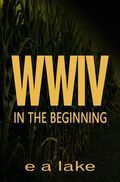 editing client of mine, E.A. Lake, has published his first novel, “WWIV – In The Beginning.” The book follows the story of Bill Carlson, an ordinary man living in a Minneapolis-St Paul suburb, who one morning wakes up – like the rest of America – to find the country without any electricity. As days pass without a restoration of power, his increasingly violent neighborhood forces him to flee north to Bayfield, Wisconsin, where he plans to hide out at his parent’s cabin. His trip across the deadly roads of northwest Wisconsin, however, leaves him questioning all he believes. The book is available on Kindle ebook.
editing client of mine, E.A. Lake, has published his first novel, “WWIV – In The Beginning.” The book follows the story of Bill Carlson, an ordinary man living in a Minneapolis-St Paul suburb, who one morning wakes up – like the rest of America – to find the country without any electricity. As days pass without a restoration of power, his increasingly violent neighborhood forces him to flee north to Bayfield, Wisconsin, where he plans to hide out at his parent’s cabin. His trip across the deadly roads of northwest Wisconsin, however, leaves him questioning all he believes. The book is available on Kindle ebook.
Need an editor? Having your book, business document or academic paper proofread or edited before submitting it can prove invaluable. In an economic climate where you face heavy competition, your writing needs a second eye to give you the edge. I can provide that second eye.
<A HREF="http://ws-na.amazon-adsystem.com/widg... Widgets</A>Related articles
 Editor's latest book now out in paperback
Editor's latest book now out in paperback Wisconsin Outdoors Fun features editor's book
Wisconsin Outdoors Fun features editor's book
April 7, 2014
Editor’s hiking guidebook debuts at No. 26
My 15th 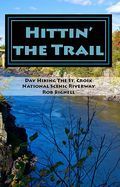 book and the latest of my hiking guides went on sale this weekend. Hittin’ the Trail: Day Hiking the St. Croix National Scenic Riverway features more than 70 Minnesota and Wisconsin trails along the St. Croix and Namekagon rivers. The National Park Service riverway runs more than 250 miles from Prescott, Wis., north to near Solon Springs, Wis., and east from the Danbury, Wis., area to near Cable, Wis. It boasts seven state parks on its shores. The book debuted at No. 26 on Amazon.com’s ebook bestseller list for Travel>Midwest on Saturday. It’s available for purchase online in paperback and ebook.
book and the latest of my hiking guides went on sale this weekend. Hittin’ the Trail: Day Hiking the St. Croix National Scenic Riverway features more than 70 Minnesota and Wisconsin trails along the St. Croix and Namekagon rivers. The National Park Service riverway runs more than 250 miles from Prescott, Wis., north to near Solon Springs, Wis., and east from the Danbury, Wis., area to near Cable, Wis. It boasts seven state parks on its shores. The book debuted at No. 26 on Amazon.com’s ebook bestseller list for Travel>Midwest on Saturday. It’s available for purchase online in paperback and ebook.
Need an editor? Having your book, business document or academic paper proofread or edited before submitting it can prove invaluable. In an economic climate where you face heavy competition, your writing needs a second eye to give you the edge. I can provide that second eye.
<A HREF="http://ws-na.amazon-adsystem.com/widg... Widgets</A>Related articles
 Editor releases first "Hittin' the Trail" guidebook
Editor releases first "Hittin' the Trail" guidebook Second 'Hittin' the trail' guidebook released
Second 'Hittin' the trail' guidebook released Editor publishes third 'Hittin' the Trail' guidebook
Editor publishes third 'Hittin' the Trail' guidebook Fourth book in 'Hittin' the Trail' series released
Fourth book in 'Hittin' the Trail' series released Editor releases fifth 'Hittin' the Trail' book
Editor releases fifth 'Hittin' the Trail' book
April 6, 2014
Five Great Quotations about Theme
“To produce 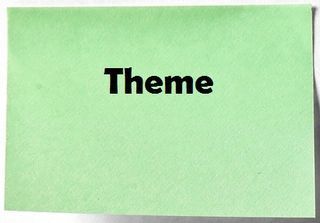 a mighty book, you must choose a mighty theme.” – Herman Melville
a mighty book, you must choose a mighty theme.” – Herman Melville
“Either write something worth reading or do something worth writing.” – Benjamin Franklin
“Have something to say, and say it as clearly as you can. That is the only secret.” – Matthew Arnold
“No one means all he says, and yet very few say all they mean, for words are slippery and thought is viscous.” – Henry Adams
“To have something to say is a question of sleepless nights and worry and endless ratiocination of a subject – of endless trying to dig out of the essential truth, the essential justice.” – F. Scott Fitzgerald
Need an editor? Having your book, business document or academic paper proofread or edited before submitting it can prove invaluable. In an economic climate where you face heavy competition, your writing needs a second eye to give you the edge. I can provide that second eye.
<A HREF="http://ws-na.amazon-adsystem.com/widg... Widgets</A>Related articles
 Five Great Quotations about Editing
Five Great Quotations about Editing Place commas inside quotation marks
Place commas inside quotation marks Five Great Quotations about Book Critics
Five Great Quotations about Book Critics Five great quotations about poetry
Five great quotations about poetry Five Great Quotations about Characters in a Story
Five Great Quotations about Characters in a Story
April 5, 2014
Editing client releases first thriller novel
The first novel 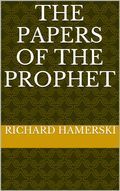 by a recent editing client has been published. Richard Hamerski’s “The Papers of the Prophet,” recounts the search for the papers that an obscure scholar named Leon Jacobson left after his death. Jacobson made uncannily accurate prophesies in his one book, and people made fortunes investing in enterprises that were favored by the trends he forecasted. Jacobson's papers contain notes for a second book, with more prophecies. Jonathan Davis, out-of-work and running out of money, sees them as a guide to escaping the poverty he faces. Unfortunately, Davis quickly learns that others want the papers of the prophet, too, and will to any length to obtain them. “The Papers of the Prophet” is available on Kindle ebook.
by a recent editing client has been published. Richard Hamerski’s “The Papers of the Prophet,” recounts the search for the papers that an obscure scholar named Leon Jacobson left after his death. Jacobson made uncannily accurate prophesies in his one book, and people made fortunes investing in enterprises that were favored by the trends he forecasted. Jacobson's papers contain notes for a second book, with more prophecies. Jonathan Davis, out-of-work and running out of money, sees them as a guide to escaping the poverty he faces. Unfortunately, Davis quickly learns that others want the papers of the prophet, too, and will to any length to obtain them. “The Papers of the Prophet” is available on Kindle ebook.
Need an editor? Having your book, business document or academic paper proofread or edited before submitting it can prove invaluable. In an economic climate where you face heavy competition, your writing needs a second eye to give you the edge. I can provide that second eye.
Related articles
 Editing client releases three parts of ebook serial
Editing client releases three parts of ebook serial Does your book cover design matter for ebooks?
Does your book cover design matter for ebooks? Editing client releases political crime thriller
Editing client releases political crime thriller
April 4, 2014
Market titles by placing free books around town
There are  plenty of waiting rooms where people will pick up a magazine or book just to kill time. Why not use this opportunity to introduce them to your book? Coffee houses, medical clinic and car dealership waiting rooms, and hotel lobbies all are places where a book might be left. Mark each book you set out as “Please leave for others to enjoy,” indicate that you’re a local or regional author, and include a list of local businesses or a web address where a reader might purchase the book. If you have books that are slightly damaged during shipping (You know, the ones you ordered to sell at your book readings?), this is a great use for them.
plenty of waiting rooms where people will pick up a magazine or book just to kill time. Why not use this opportunity to introduce them to your book? Coffee houses, medical clinic and car dealership waiting rooms, and hotel lobbies all are places where a book might be left. Mark each book you set out as “Please leave for others to enjoy,” indicate that you’re a local or regional author, and include a list of local businesses or a web address where a reader might purchase the book. If you have books that are slightly damaged during shipping (You know, the ones you ordered to sell at your book readings?), this is a great use for them.
Need an editor? Having your book, business document or academic paper proofread or edited before submitting it can prove invaluable. In an economic climate where you face heavy competition, your writing needs a second eye to give you the edge. I can provide that second eye.
<A HREF="http://ws-na.amazon-adsystem.com/widg... Widgets</A>Related articles
 Fanfic not so bad if used for growing as a writer
Fanfic not so bad if used for growing as a writer Everywhere a sign and a line: Cue vs. queue
Everywhere a sign and a line: Cue vs. queue Prepare for good writing: All ready vs. already
Prepare for good writing: All ready vs. already Clearing this up: Sight vs. site
Clearing this up: Sight vs. site Five Great Quotes about the Business of Writing
Five Great Quotes about the Business of Writing
April 3, 2014
Editing client publishes story of his fall
The latest  book by editing client Rodney Jetton has been released. “Success Can Kill You: One Man's Story of Success, Failure and Forgiveness. During the 1000s, Jetton became the second youngest House Speaker in Missouri state history only four years after being elected to the state legislature. He was a powerful force in that state’s Republican Party and on the fast track to becoming Governor of Missouri, when his personal life exploded as he went through a very public and humiliating fall.
book by editing client Rodney Jetton has been released. “Success Can Kill You: One Man's Story of Success, Failure and Forgiveness. During the 1000s, Jetton became the second youngest House Speaker in Missouri state history only four years after being elected to the state legislature. He was a powerful force in that state’s Republican Party and on the fast track to becoming Governor of Missouri, when his personal life exploded as he went through a very public and humiliating fall.
On Dec. 7, 2009, he was arrested for felony assault after a one-night stand with a woman he connected with on Facebook. Soon after that, he received a call from a former girlfriend telling him she was pregnant and he was going to be a father at the age of 42. Then, just a few weeks later, Jetton found out he was the target of a grand jury investigation from his handling of a bill when he was Speaker.
This book is Jetton’s testimony of how the pursuit of power and his unparalleled political success almost destroyed his life. His candid way of explaining his mistakes and pointing out the dangers of putting his career in front of his faith and family will be of great benefit to driven leaders focused on accomplishing their goals. The book is available in both paperback and ebook.
Need an editor? Having your book, business document or academic paper proofread or edited before submitting it can prove invaluable. In an economic climate where you face heavy competition, your writing needs a second eye to give you the edge. I can provide that second eye.
<A HREF="http://ws-na.amazon-adsystem.com/widg... Widgets</A>Related articles
 Editing client releases 'Son of a Preacher Man'
Editing client releases 'Son of a Preacher Man' Rod Jetton Podcast: How can you survive a personal crisis, especially while in office
Rod Jetton Podcast: How can you survive a personal crisis, especially while in office Editing client releases baseball novel
Editing client releases baseball novel Concrete advice on literally vs. figuratively
Concrete advice on literally vs. figuratively
April 2, 2014
Flash of brilliance: Lightning vs. lightening
With a great  heaviness in my heart, I must report that some writers often mix up lightning and lightening.
heaviness in my heart, I must report that some writers often mix up lightning and lightening.
Lightning is the flash of light that accompanies thunder: The lightning lit up the room as if it were daytime.
Lightening, however, is a reduction of weight, either literally or figuratively: The hikers sat against the boulders, lightening the load on their tired feet.
A quick memory tip: lightening has an “e” in it and so is the “heavier” word.
Need an editor? Having your book, business document or academic paper proofread or edited before submitting it can prove invaluable. In an economic climate where you face heavy competition, your writing needs a second eye to give you the edge. I can provide that second eye.
<A HREF="http://ws-na.amazon-adsystem.com/widg... Widgets</A>
Related articles
 Everywhere a sign and a line: Cue vs. queue
Everywhere a sign and a line: Cue vs. queue Improve writing by eliminating ambiguities
Improve writing by eliminating ambiguities Editing client publishes first novel, 'The Highway'
Editing client publishes first novel, 'The Highway' Self-discipline to write a daily a must
Self-discipline to write a daily a must Client publishes short story, poetry collection
Client publishes short story, poetry collection



